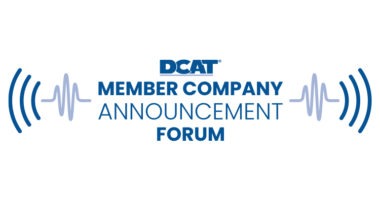Modest Growth Projected for the US Pharmaceutical Industry
Spending on all US medicines increased only 0.6% in 2017 to $324 billion on a net basis due to greater generic volume, larger manufacturer discounts, and increasing coupon use, according to a recent analysis by the IQVIA Institute for Human Data Science. So what is the near-term outlook?
US medicine spending is projected to grow 2-5% after off-invoice discounts and rebates through 2022 to an estimated $380 billion to $410 billion on a net basis, according to the IQVIA analysis. This growth, driven primarily by the large number of new medicines, many of which will be specialty and orphan drugs, will be offset by the impact of losses of brand exclusivity. DCAT Value Chain Insights examines the numbers.
Inside the numbers
The IQVIA report, Medicine Use and Spending in the US: A Review of 2017 and Outlook to 2022 outlines key trends in medicines spending in the US. Spending growth slowed in 2017 due to lower price increases for protected branded products, price declines for generics, and less growth from new products despite a large increase in the number of new product launches. In 2017, spending grew 0.6% net of off-invoice discounts and rebates as invoice-level growth slowed to 1.4%. Overall, spending reached a total of $453 billion on a gross invoice basis but $324 billion on a net basis. Discounts, rebates, and other price concessions on branded medicines reduced absolute invoice spending by an estimated 28% to $324.4 billion. When adjusted for off-invoice discounts and rebates, population and economic growth, real net-per-capita drug spend declined by 2.2% in 2017 and had a compound annual growth rate (CAGR) of only 1.0% during the past decade. Retail prescription drugs accounted for $212 billion in net spending in 2017, reflecting a 2.1% decline from 2016.
For purposes of the report, “net spending” refers to the amount received by pharmaceutical manufacturers after rebates, off-invoice discounts, and other price concessions have been made to distributors, health plans and intermediaries. For purposes of the report, “spending on medicines” and “invoice-price spending” refer to the amounts paid to distributors by their pharmacy or hospital customers. It does not relate directly to either the out-of-pocket costs paid by a patient (except where noted), nor does it refer to the amount health plans or Medicare pay for medicines, and does not include mark-ups and additional costs associated with dispensing or other services associated with medicines reaching patients.
New brand growth
Net spending growth in the US slowed from $12.1 billion in 2016 to $0.7 billion in 2017, according to the IQVIA report. The largest drivers of net spending growth in 2017 were the group of new brands on the market for less than 24 months; these accounted for $12.0 billion in new spending on a net basis, down from the historically high levels seen in the past three years. Reflective of those numbers is the dramatic rise and then decline of hepatitis C spending on a net basis, which includes the dynamics of rising off-invoice discounts and significant numbers of patients treated (and cured) in the past four years, according to the IQVIA report. Overall, new brands contributed $2.3 billion less growth, and generics declined by $5.5 billion after having grown by $0.7 billion in 2016. Protected brands and generics contributed less to growth as price increases were lower than in 2016, on both an invoice and net basis. After the historically high growth in 2014 and 2015, driven predominantly by innovative new medicines, 2017 growth was slower on a net basis than all but two of the last 10 years, according to the IQVIA report.
Specialty medicines on the rise
At the same time, the balance of medicine spending in the US has shifted strongly to specialty medicines from traditional treatments, according to the IQVIA report. Specialty medicines drove $9.8 billion of the $12.0 billion net growth of new brands. Specialty medicines in the US now account for 46.5%, or $407 of the $876 per-person, per-year spent on medicines, according to the report. Specialty share of net spending across institutional and retail settings rose from 24.7% in 2008 to the 46.5% in 2017. The largest proportion of new medicines launched in the last five years have been specialty drugs, and specialty share of spending has risen, while traditional net medicine spending has declined by more than $133 per person over the past decade, according to the IQVIA report. Spending on traditional medicines has declined primarily due to patent expiries, and associated brand losses of exclusivity, as well as a general shift in the focus of innovation, according to the IQVIA report. While specialty medicines represent an increasingly larger proportion on medicine spending on a value basis, they still account for a relatively small percentage on a volume basis. In terms of prescription volume, specialty medicines represent only 1.9% of prescriptions and 37.4% of spending in the same retail and mail-order distribution channels, according to the IQVIA report. In non-retail settings, specialty drugs represent 60% of invoice spending and 2.3% of standard unit volumes.
New product launches
On a positive note, new drug launches rebounded in 2017, with 42 new active substances introduced, more than double the number launched the prior year, with 21 for rare diseases and 14 for cancer, according to the IQVIA report. The report notes that shifts in the regulatory process are becoming apparent, with 19 drugs receiving breakthrough designation and 18 drugs including patient-reported outcomes as part of their US Food and Drug Administration (FDA) approved label in 2017. Of the 42 new active substances launched in 2017, 32 are in specialty therapy areas, according to the IQVIA report.
Medicine-usage trends
With respect to medicine-usage trends, adjusted dispensed prescriptions in the US exceeded 5.8 billion in 2017, up from 5.7 billion in 2013, according to the IQVIA report. Generics accounted for 90% of prescriptions, up from 72% in 2008, and were dispensed 97% of the time it was possible to do so, according to the report. The vast majority of new therapy initiations and continuing prescriptions are with generics, according to the report. Prescription growth has been driven mainly by the aging population despite slowing per-capita use in those over 65, according to the report.
Patient use of medicines continued to rise in 2017 with a significant increase of 90-day prescriptions for the treatment of chronic conditions, according to the IQVIA report. This trend toward 90-day dosing cycles is intended to improve patient adherence, notes the report. “Every year, there are hundreds of billions of dollars in avoidable healthcare costs, with the largest portion of these relating to non-adherence to drug therapies and the associated complications,” notes the report. As an example, the report points out that hypertension is the largest therapy area by drug volume, and it affects nearly one-third of Americans. The report points to new guidelines that recommend treating nearly half of the population, which could further increase the prescription volume within that growing category.
Hypertension, mental health, and diabetes accounted for 55% of prescription growth in the US over the past five years while pain medicines declined. The greatest decline in treatment volumes in 2017 was for prescription opioids, which saw its largest decline ever as greater restrictions, patient awareness and responsible treatment decisions reduced usage by over 12% of morphine milligram equivalents (MMEs), according to the report. The highest doses of prescription opioids declined by over 33% during the past two years.
The IQVIA report shows that prescription opioid volume had increased annually since 1992, peaking in 2011. A series of regulatory and legislative restrictions, combined with tighter clinical prescribing guidelines and greater reimbursement controls, resulted in average 4% per year declines from 2012 through 2016. Overall, prescription opioid volume decreased annually during the past five years across all 50 states. In addition to MME declines, actual dispensed opioid prescriptions decreased 10.2% in 2017while high-doses, those where the patient was prescribed more than 90 MMEs per day and which correlate with higher risk of dependency and overdoses, declined by 16.1% for the same year.
Patient spending on medicines
The IQVIA report also examined the trends in patient out-of-pocket costs, which is a determinant in medicines usage. List prices at pharmacies have risen by 58% during the past five years while final out-of-pocket costs declined 17% as increasing adoption of generic medicine and greater use of coupons lowered patient costs, according to the report. “These divergent trends reflect the complex dynamics determining how much patients pay for their medicines and the influence those costs have on whether patients fill their prescriptions,” explains the report. Almost 31% of prescriptions were dispensed at zero patient out-of-pocket cost while patients paid $500 or more out-of-pocket when filling 3.4 million prescriptions in 2017, according to the IQVIA analysis.
Looking ahead
IQVIA projects a modest overall increase of 2% to 5% net spending during the next five years, with 1% to 4% percent growth in retail and mail-order prescription drugs. That is expected to drive overall medicine spending in the US to an estimated range of $550 billion to $600 billion by 2022, or $380 billion to $410 billion on a net basis. This growth, driven primarily by the large number of new medicines, many of which will be specialty and orphan drugs, will be offset by the impact of losses of brand exclusivity, notes the report.






